No matter what it's like to drive – and we admit, it is a great little car – you can't escape the fact that Volvo plans to charge lessees around $2,100 a month for the upcoming C30 Electric. There will be no option to buy a C30 Electric, so don't think you can get around the rules that way. Nope, all Volvo will be doing is offering 400 early adopters the chance to spend $76,674 over the three-year lease to not buy an electric car. Call us crazy, but if we had that kind of money to throw at an electric vehicle (EV), we'd consider donating plasma to get another 35k and just up and buy a Tesla Roadster.
But, well, we don't, and the C30 Electric isn't here (yet) anyway, so we don't need to make a decision quite yet. Still, just knowing that price tag influenced our thinking as we tested the car recently and we expect it's going to stick in your mind, too, as you read the following review. Prove us wrong – or right – after the jump.
Photos copyright ©2011 Sebastian Blanco / Weblogs, Inc.
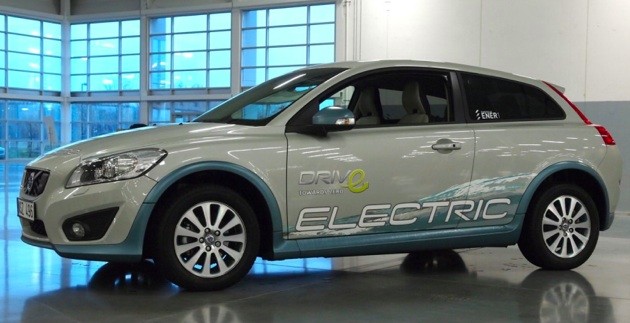
Behind The Scenes
Really, all that Volvo is doing here is getting someone else to help pay the R&D costs of developing an EV, and no one should think that this price is at all indicative of what Volvo's first real mass-market electric vehicle will cost. Plus, given the limited numbers of C30 Electrics headed for production, we expect Volvo to be able to find 400 people out there quite willing to pay handsomely to be the first on their block with one. From this perspective, it makes sense: if Volvo can do it, why not? From an outsider's perspective, though, the question is: what are you thinking, Volvo?!? You're just putting an ultra-high price tag into people's minds when it comes to EVs, and that doesn't help the cause. Volvo already admitted it will lose money on these C30s, so why not lose a bit more and chalk it up to R&D costs?
There's a reason the car is so expensive. When building a normal vehicle, OEMs have options when it comes to selecting components and suppliers. With plug-in vehicles, this isn't the case, is how Lennart Stegland, president of Volvo Car Special Vehicles, explained it to us in Indiana. When Volvo started the project over two years ago, it identified 235 manufacturers making li-ion cells, but only around a half-dozen were able to build cells that could work in an electric car to the specifications that Volvo wanted, so it had to develop a lot of technology on its own (like the special ethanol heater) and work closely with suppliers to create the parts it needed:
Stegland said that commercial vehicle is probably coming at the end of 2013 or sometime in 2014. Hey, as long as it doesn't come with the C30 Electric's outrageous price tag, count us in.The technology, in a standardized format, is not available, so you have to design the technology that you want to use. With this car, from a competence level, we are very strongly building up this knowledge, so we will know a lot about electrical motors, inverters and AC/DC chargers, the kind of in-depth competences that would normally sit with suppliers. What we do with all that knowledge is transfer all that technology that we have built up now – most of it, as there will be some changes because of the learnings we have made – we will translate to the next platform, which will be from the size point of view a similar car. That will be the commercial product. The C30 Electric is really, for us, a learning program.
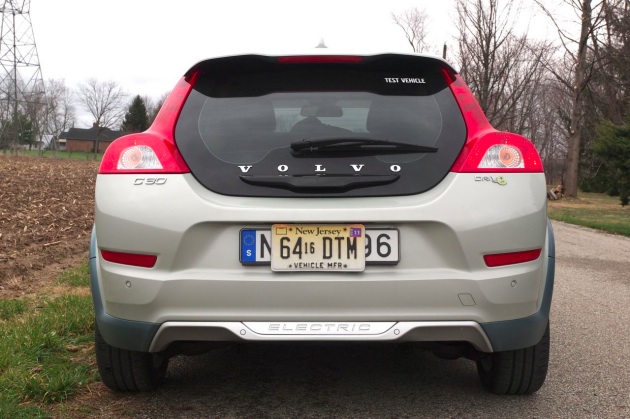
For the C30 Electric, Volvo is working with Ener1 to develop the heart of the powertrain: a 24 kWh pack that charges in eight hours over a standard 230V European outlet (pretty much the same as Level 2 charging here in the U.S.). The car is also being designed to handle DC fast charging, but the details of that are not totally clear yet. The car can't handle that kind of power now, but the capability will be there within 12 months, Stegland said, and the car can be retrofitted to provide that option. In the U.S., homes don't have that kind of electrical firehose, and a lot of "Level 3" public charging doesn't exist right, so Volvo's plan seems to be: when the infrastructure is available, the car will be ready, too.
For now, who needs that much juice? Volvo considers the C30 Electric, which has 75 miles of range, a city commuter. Stegland said that most people go to work during the week, go shopping on Saturday and go to church on Sunday. For all those plans, a car like the C30 Electric fits just perfectly. "Most people have a routine life, even if we don't like to admit it," he said, adding that the C30 Electric's range would cover 90 percent of all commuters. Well, it would if the company was going to make more than 400 examples. Until then, this is all theoretical. As for Ener1's contribution, Ulrik Grape, the president of Ener1 Europe, told us:
It's nice that this is going to be several hundred vehicles and it's going to be out there, but clearly we see a carrot there and are hopeful that this will become a mass-market program with significantly higher volumes in the future. That's, of course, up to Volvo.

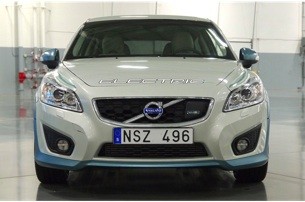
It's not an easy decision to make. These days, Volvo's fuel-efficiency focus is on micro-hybrids, PHEVs and pure electrics (and decidedly not on mild or full hybrids or on EVs with range extenders). Stegland said that start-stop powertrains are interesting because, even though they only increase fuel economy by around 2-3 percent from a homologation (regulatory) standpoint, in real-world city driving, the benefits are closer to 10 percent. In the long term, Volvo's plug-in vehicle outlook is forked, and the company is developing two different platforms, one for plug-in hybrids (the V60) and another for pure electric vehicles (the C30). Just how big the market for these types of vehicles remains to be seen. Stegland showed us some sobering 2010 EV registration numbers from Polk: 5,000 or so in the U.S., 364 in Germany, 192 in Switzerland, 184 in France, 167 in the UK, 112 in Austria, 69 in Spain, 42 in Denmark, 36 in Belgium, 18 in Portugal, 17 in Ireland, 9 in Sweden, 4 in the Czech Republic and 0 in Greece. Oh, and an unknown amount in China. Sure, mass-market EVs weren't widely available in 2010, but we all know that EV technology has been around for 100 years, and this is what we're dealing with after Century #1. So, where will Volvo's EVs be sold? Stegand didn't say, and predicting the EV future is, of course, notoriously difficult. He did say, though, that if oil stays at $100 a barrel or jumps up, the electrification of the vehicle is coming. He added that Europe will likely be the near-future home of plug-in vehicles, but China is aggressively pushing for more plug-in vehicles and could really change the market in a hurry.
To get ready for that day, Volvo has been working on the C30 Electric for about 25 months, and before the 400 "real" C30 Electrics come to market, Volvo is running through a series of pre-production vehicles. First came the VP series, then the TT series – the ones we drove in Indiana – and soon the PP series, made up of 30 cars, will help Volvo validate the production process. Only once all this is over, around nine or ten weeks from now, will Volvo begin making the SOP (start of production) models, so there's plenty of time for further adjustments to be made. Once all this is sorted out, Volvo will bring two fleets to the U.S., made up of 50 vehicles on each coast, in the first quarter of 2012 (with the rest destined for Europe). If you can't swing the $2,000 or so the lease will cost, remember that the Nissan Leaf and the Chevy Volt both lease for around $350 a month.
So, what's on tap for the as the C30 Electric and Volvo's plug-in program evolves? Ener1 and Volvo are working on the next-gen battery, of course, and are hoping to improve costs, optimize the value stream for assembly, make the sheet metal design better and improve the cooling systems. Air-cooling systems are not as good as liquid-cooled systems, said Tom Goesch, president of transportation of Ener1, Inc., so the next-gen pack might get liquid cooling.
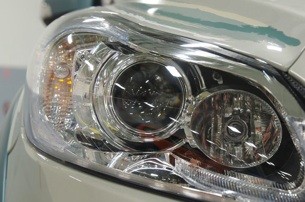
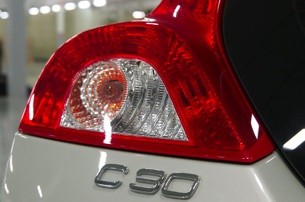
Behind The Wheel
When you're driving the C30 Electric, you can forget that it's prohibitively expensive – most often when you realize that you just want one. Pulling away from a stop is gorgeous fun, even though the car doesn't have amazing acceleration. In fact, it gets moving kind of like a 1.8-liter four-cylinder, ambling from zero up to 100 kilometers per hour (aka 0-62 miles per hour) in a modest 12 seconds thanks to a compact permanent magnet electric motor that provides 84 kW peak power (40 kW constant) and 110 hp. This is slower than the previous time of 10.5 seconds, since Volvo is still adjusting performance to maximize range. What's interesting, though, is that 12 seconds doesn't feel sluggish at all – even on slight uphills – given the beautiful quiet and smooth acceleration of the electric drive. With the standard sounds stripped away, the car feels faster – and not just because the speedometer showed us kilometers instead of miles. This feeling might change in the future once we're all used to single-speed transmissions and silent motoring, but for now, getting going in a C30 Electric feels nothing like doing so in a standard four-banger.
Before any of that happens though, right when you get into the car, you feel comfortable. The car wraps itself around you in a very satisfying way and rear visibility is excellent. It's not quite as easy to maneuver in reverse as a Smart ForTwo is (not many vehicles are), but it beats the pants off the Chevy Volt's rear view. Looking forward, you see a little eco needle to tell you how "green" you're driving (or not, as the case may be). In the city, the C30 should be an excellent performer (just ask anyone who owns the ICE version). The cabin is also well-crafted to be nice and quiet – not always an easy task for a company's early EV – and there was no noticeable aural intrusion from the outside world; a common problem when you take the dirty and noisy ICE out from underhood. The weight of the battery pack is down low, which helps with handling. There aren't many curvy roads in backcountry Indiana, but we have nothing but good things to say about the way the car danced through the late winter corn fields. We didn't get to try out the top speed of 130 km/h (81 mph), but we imaging that will be an acceptable number for reasonable drivers. Oh, and we're pretty sure the C30 Electric will be safe in a crash – as we've discussed over and over before. Another safety feature: the car is disabled when plugged in, so you can't drive away and rip the cord out.
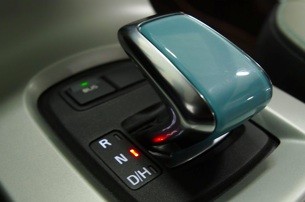
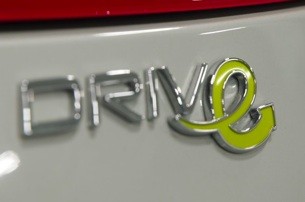
The absolute best part of the way the C30 Electric moves, though, is the selectable coasting/regenerative braking option, similar to Volkswagen Golf Blue-e-motion. Aside from an interface issue, this is what we hope all EVs will evolve to in the future. The interface issue is that you need to "double-click" the shifter a lot. When you're in D, you have to tap the shifter twice to get it to R (passing through N on the way). Same thing to go from R to D. You do this on any car with a standard shifter, but the C30 Electric has a Prius-like knob that requires you to go "click, click" to change directions.
The shifter works well once the car is in motion, though, and you want to engage highway (H) mode. To do so, you simply "shift into drive" again. This eliminates the car's regenerative braking and allows you to coast to slow down. Sure, putting regenerative brake energy into the battery is cool, but it's even cooler to just let the car slow down on its own, especially if you can time things so you don't need to hit the brakes at all – which means you didn't spend any unnecessary energy to move in the first place. If you're already a careful non-hybrid ICE driver used to squeezing every mile out of your tank, you'll feel right at home with the C30 in H mode. When you don't want this easy coasting, you can shift back into standard D/regen mode, and this will act like you put your foot on the brake if it wasn't already. The drive modes are efficient, driver-selectable and operate however you think an EV should. In short, this is an EV for the way we like to drive. Build one we can actually afford and we're sold.
Photos by Sebastian Blanco / Copyright ©2011 Weblogs, Inc.
Our travel and lodging for this media event were provided by the manufacturer.
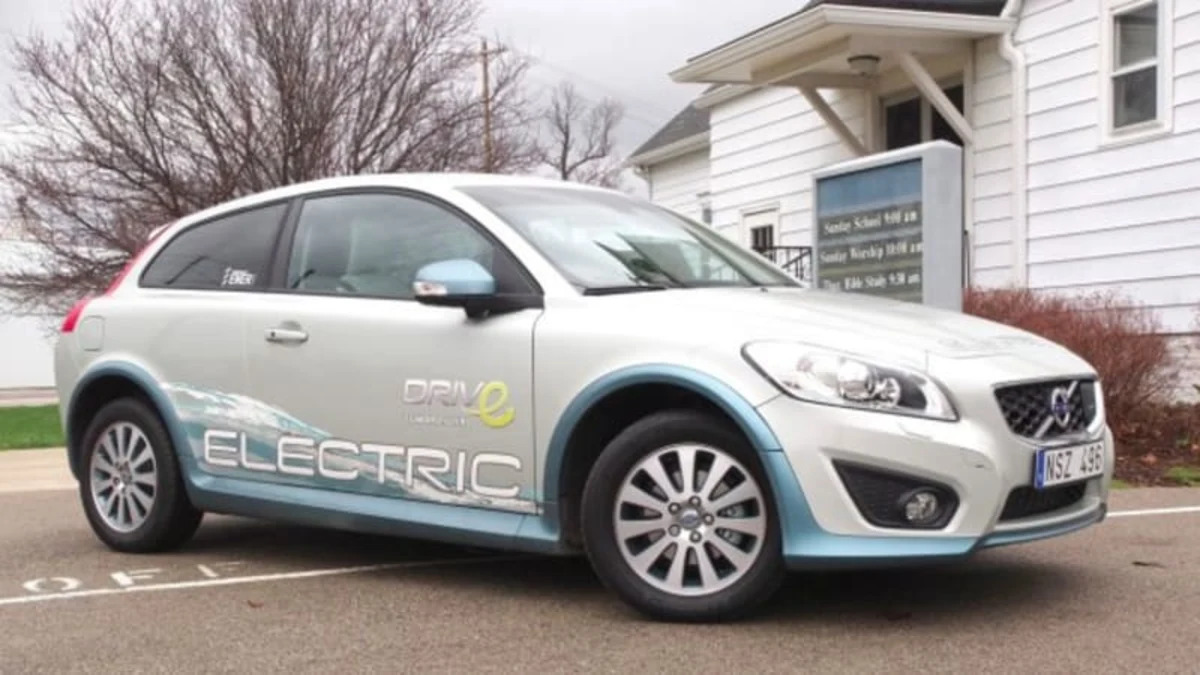


Sign in to post
Please sign in to leave a comment.
Continue